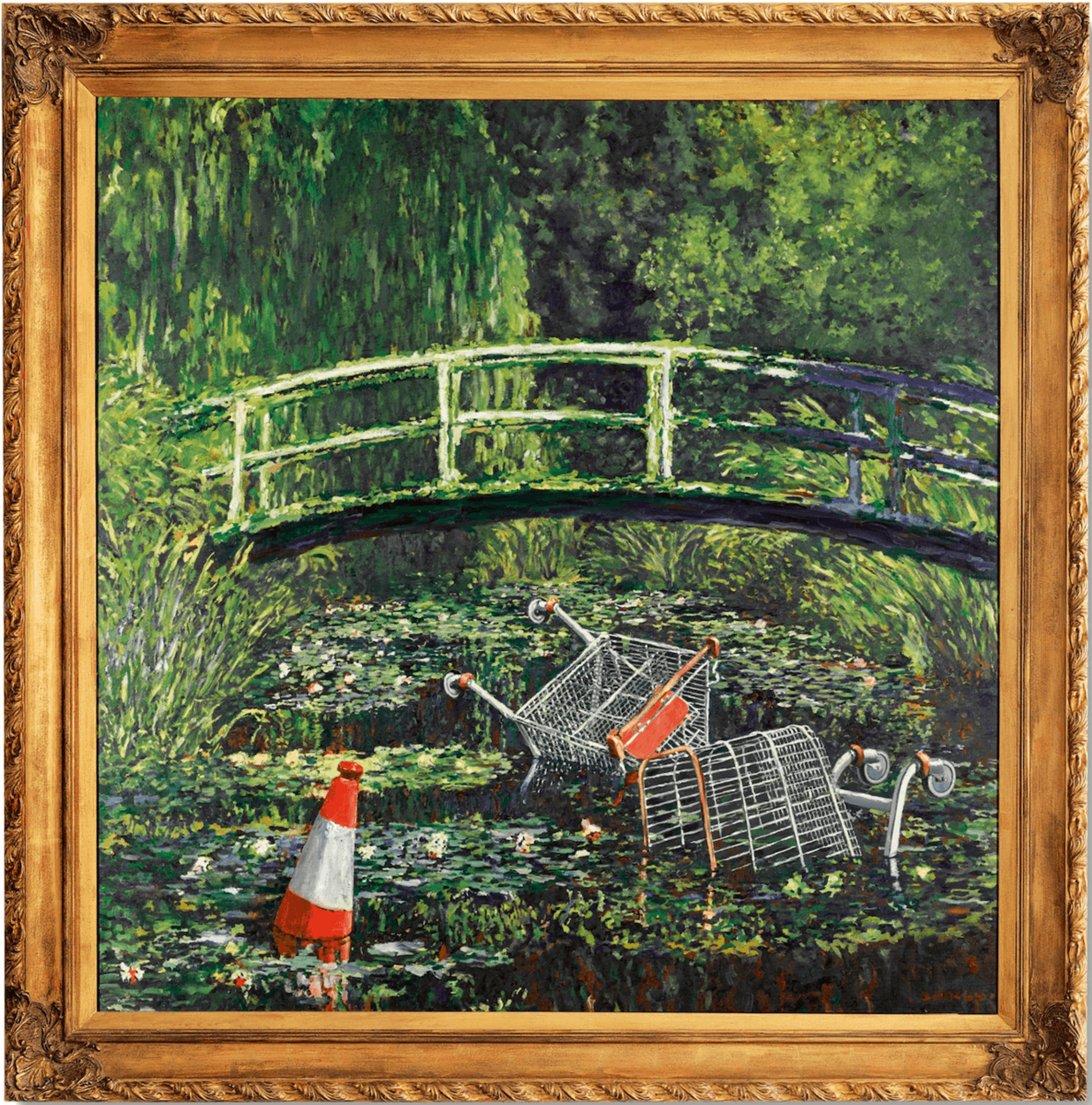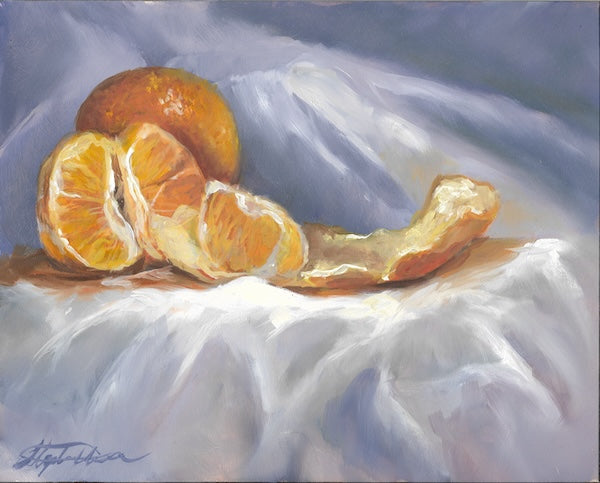Original Still Life and Floral Oil Paintings for Sale
Original Still Life and Floral Oil Paintings for Sale
Blog Article
Checking out All Regarding Oil Paintings: A Guide to Understanding Their Beauty and Worth
Oil paintings have astounded target markets for centuries, using a look into the creative mastery of numerous periods. Their abundant background is linked with innovative strategies and extensive emotional expression. Comprehending the materials and methods behind these artworks can boost admiration. Furthermore, the market for oil paintings offers chances for collection agencies and investors alike. As one explores this remarkable globe, the concern arises: what makes an oil paint really valuable?
The Background of Oil Painting: A Trip Through Time
Although oil painting has roots that date back to ancient times, it truly prospered during the Renaissance, when musicians discovered its adaptability and rich shade possibility. Early examples can be mapped to the 7th century, with techniques advancing notably throughout societies. The medium came to be prominent in Northern Europe in the 15th century, specifically via the jobs of musicians like Jan van Eyck, that pioneered its use for in-depth realism and lively hues. This period noted a separation from tempera paints, permitting greater deepness and texture. As oil painting spread, it affected numerous musicians, bring about work of arts by prominent figures such as Leonardo da Vinci and Rembrandt. The tool's heritage continues, shaping the art globe well right into modern times.
Comprehending Oil Repaints: Products and Techniques
As artists explore the world of oil paints, they come across a varied array of materials and methods that specify this tool. The main parts of oil paint consist of pigments, which provide color, and drying oils, such as linseed, that bind the pigments and assist in application. Different ingredients can modify the paint's structure and drying time, boosting adaptability. Techniques like glazing, where clear layers are accumulated, and impasto, which entails using thick paint, permit different aesthetic results. Additionally, using brushes, palette knives, and also fingers can develop one-of-a-kind textures and finishes. Understanding these materials and strategies allows artists to completely express their creativity and achieve the wanted influence in their art work.
The Duty of Shade in Oil Paintings
Color plays a pivotal duty in oil paintings, affecting both aesthetic allure and emotional resonance. Comprehending color concept basics, consisting of the connections in between colors, can boost an artist's ability to share mood and environment. Furthermore, grasping shade mixing techniques allows for greater deepness and richness in a paint's palette.

Color Theory Fundamentals
Recognizing shade theory is vital for artists working with oil paints, as it creates the structure for producing harmonious and visually interesting structures. Shade theory incorporates the study of how shades engage, the shade wheel, and the partnerships in between primary, additional, and tertiary shades. Artists utilize corresponding colors to enhance contrasts and produce focal factors, while comparable shades advertise unity and cohesiveness within a piece. Additionally, the concepts of cozy and trendy colors affect the perception of deepness and room in a painting. Grasping these concepts allows musicians to manipulate color effectively, assisting the viewer's eye and interacting their desired message. Mastery of color concept eventually improves an artist's capability to share emotions and concepts through their work.
Psychological Impact of Color
The psychological impact of shade in oil paintings plays a crucial function in exactly how viewers attach and perceive with artwork. Shades stimulate details feelings and moods, influencing the customer's emotion. Warm colors like oranges and reds can develop a feeling of heat and power, while great tones such as blues and environment-friendlies usually stimulate calmness or self-questioning. Artists strategically choose color palettes to enhance narrative elements, guiding the audience's psychological trip. The saturation and comparison of shades better enhance these impacts, drawing attention and creating emphasis. Inevitably, the interaction of shades in oil paintings not only boosts their aesthetic charm however additionally offers as an effective medium for emotional expression, enriching the visitor's experience and analysis.
Color Mixing Techniques
While several facets of oil paint add to the overall make-up, understanding color mixing techniques is vital for accomplishing preferred impacts and depth. Color mixing can be come close to via numerous approaches, consisting of the subtractive and additive processes. Additive mixing involves combining shades of light, while subtractive mixing depends on pigments, where shades blend to develop brand-new shades. Artists often utilize a restricted palette to develop unified works, understanding the relationships in between main, additional, and tertiary shades. Strategies such as glazing and scumbling better boost depth and luminance. By skillfully blending colors, a musician can evoke feelings, create focal factors, and achieve a feeling of realism, eventually elevating the paint's psychological and visual effect.
Famous Oil Painters and Their Iconic Functions

Well known for their proficiency of shade and technique, oil painters have produced a few of one of the most popular art work in history. Popular artists like Vincent van Gogh mesmerized target markets with his stirring brushwork in "Starry Evening," while Claude Monet's "Perception, Daybreak" laid the foundation for Impressionism. Leonardo da Vinci's "Mona Lisa" continues to be a long-lasting icon of imaginative wizard, showcasing his ability in recording human expression. Meanwhile, Rembrandt's "The Night Watch" highlights his cutting-edge usage of light and darkness. Other significant figures include Pablo Picasso, who revolutionized modern art with his bold experimentation in jobs like "Les Demoiselles d'Avignon," and Georgia O'Keeffe, whose vivid representations of blossoms and landscapes aided define American innovation. Each artist's distinct design added greatly to the oil paint landscape.
Exactly how to Assess the Quality of an Oil Paint
Reviewing the high quality of an oil painting entails a mindful evaluation of craftsmanship strategies, in addition to an analysis of shade and structure. Observing brushwork, layering, and the application of paint can reveal the musician's skill degree. Furthermore, the interplay of shades and the total plan of elements add significantly to the painting's visual value.
Assessing Workmanship Techniques
A precise analysis of craftsmanship techniques is crucial for figuring out the quality of an oil paint. Evaluators need to initially take a look at the application of paint; thick, textured brushstrokes might recommend a proficient hand, while excessively uniform applications can suggest a lack of deepness. oil paintings for sale. The layering method is also essential; the visibility of glazes and differed thickness can enhance luminance and complexity. Additionally, the high quality of the materials made use of, such as the canvas and pigments, plays a considerable role in durability and total aesthetic. Focus to detail in components like edges and changes between shades shows the musician's dedication to their craft. Ultimately, these techniques add to the paint's psychological impact and market price, functioning as indicators of the musician's skill and intent
Examining Shade and Structure
While reviewing the high quality of an oil paint, one need to concentrate on the interplay of shade and composition, as these aspects are basic to the artwork's total effect. Shade selections can stimulate emotions and develop mood; for that reason, the artist's combination need to be analyzed for harmony and contrast. A well-balanced structure routes the viewer's eye and creates a sense of unity. Artists typically utilize methods like the policy of thirds or leading lines to boost aesthetic passion. In addition, the use of light and shadow can add depth, enhancing the three-dimensionality of the painting. Ultimately, a successful oil painting marries color and composition, engaging the viewer and welcoming a deeper gratitude of the musician's vision and method.
Caring for and Preserving Oil Paintings
Correct care and conservation of oil paints is crucial for keeping their stability and durability. To safeguard these artworks, it is essential to present them far from direct sunlight, which can trigger fading and discoloration. Maintaining a secure atmosphere with controlled temperature and moisture more help in protecting against damages. Cleaning up ought to be done carefully utilizing a soft, completely dry fabric, preventing any harsh chemicals that can harm the paint or varnish. Regular inspections for signs of deterioration, such as fracturing or flaking, are suggested. When storing or delivering oil paints, proper cushioning and framework are required to stay clear of physical harm. Ultimately, thorough treatment adds to the aesthetic appeal and worth of oil paints in time.
The Marketplace for Oil Paintings: Investing and collecting
Recognizing the market dynamics for oil paints is vital for financiers and collectors alike. The worth of these artworks is affected by different elements, consisting of the artist's track record, historic significance, and current patterns. Enthusiasts often seek pieces that reverberate directly while taking into consideration potential recognition in value. Public auctions and galleries function as key locations for trading, with rates fluctuating based on need and rarity. Purchasing oil paints needs research right into the market, in addition to an understanding of credibility and provenance. Additionally, arising artists might provide possibilities for substantial returns, while established names can command high rates. Generally, a tactical technique to accumulating can yield both visual satisfaction and monetary rewards.

Often Asked Inquiries
What Are the Ecological Influences of Oil Painting Materials?
The ecological influences of oil painting materials include the release of unstable natural substances (VOCs), hazardous waste generation, and resource extraction for pigments. These elements add to air pollution and eco-friendly destruction, raising issues among environmentally mindful artists and consumers.
Exactly How Do Different Canvases Impact Oil Painting Results?
Different canvases influence oil painting results significantly. Absorbency, structure, and surface area quality can change paint application, drying out times, and shade vibrancy. Artists commonly choose particular canvases to attain desired impacts and improve their creative expression.
Can Oil Paintings Be Recovered if Harmed?
Oil paintings can certainly be restored if harmed. Specialist conservators use numerous strategies to fix splits, clean surface areas, and address staining, making sure that the artwork retains its initial charm and value for future generations.
What Are the Indicators of an Original Oil Painting?
The indications of an initial oil paint include noticeable brush strokes, texture variants, and an unequal canvas weave (oil paintings for check here sale). Furthermore, credibility may be verified with provenance, signatures, and the existence of a varnish layer special to oil mediums
Exactly How Has Innovation Influenced Modern Oil Painting Techniques?
Technology has considerably influenced modern-day oil painting strategies by introducing electronic tools for planning, boosted materials for appearance and longevity, and on-line platforms for offering and sharing art, thereby broadening musicians' creative opportunities and target market reach. Oil paint has origins that date back to ancient times, it genuinely flourished during the Renaissance, when musicians discovered its flexibility and rich shade potential. The psychological effect of color in oil paintings plays an essential role in just how customers attach and view with artwork. While several elements of oil painting add to the general composition, understanding shade mixing strategies is vital for achieving wanted impacts and depth. Reviewing the high quality of an oil paint includes a careful analysis of craftsmanship strategies, as well as an analysis of shade and structure. While evaluating the top quality of an oil painting, one have to focus on the interaction of color and make-up, as these aspects are basic to the artwork's total impact.
Report this page